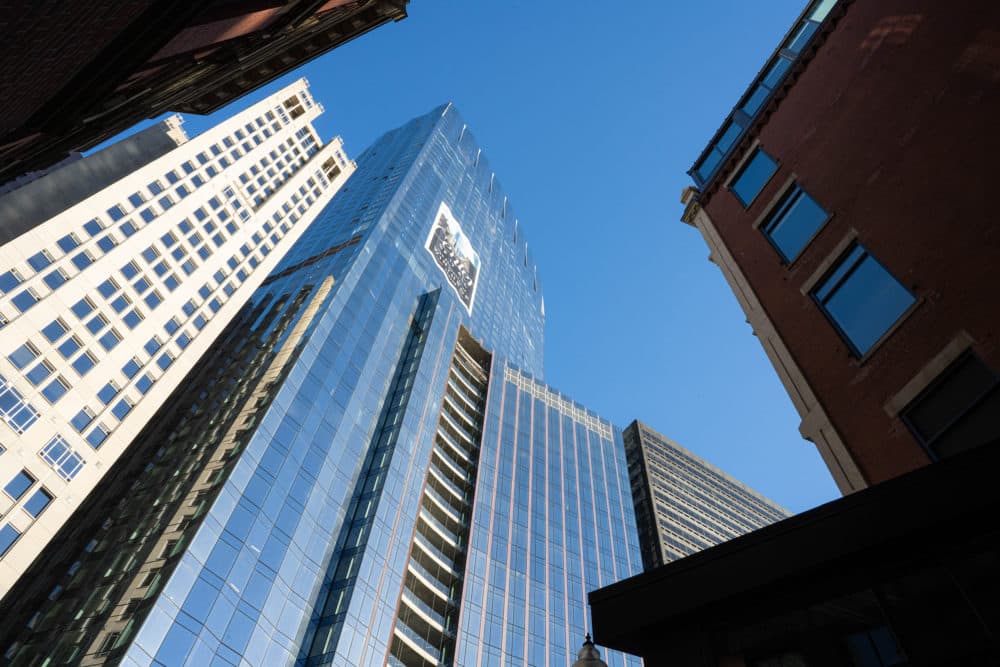Advertisement
Boston soon to be home to one of the largest 'passive' design buildings

An office building in downtown Boston is expected to become one of the largest buildings with a "passive" design after it cleared a certification milestone earlier this week. The concept involves a combination of strategies that drastically reduce energy use as much as 70%. The 812,000-square-feet Winthrop Center space passed several key tests Tuesday; offices are expected to operate this summer.
The passive house design concept starts with the facade, which has to be well-insulated and air-tight, said Brad Mahoney, director of sustainable development at Millennium Partners Boston, which owns the building.
“You're adding an extra layer of glass, you're adding more insulation. So if I were to be sitting by the exterior right now, I would not be cold. It wouldn't be noisy,” he said.
Because of the building’s air-tight design, it also has a ventilation system that brings in fresh air. The developer said Winthrop Center provides 30% to 50% more fresh air than comparable buildings.
And the passive house design greatly reduces the need to heat and cool the building — up to 10 times less compared to typical buildings. The system is more efficient, but what drives the lower demand is the building's insulation and air-tightness.
In Boston, buildings are responsible for nearly 70% of greenhouse gas emissions, so reducing their energy consumption could make a significant impact. Typical comparable office buildings use 150% more energy than Winthrop Center, while LEED certified buildings use about 60% more, according to the developer.
On Tuesday the building passed a series of tests to become certified by the Passive House Institute in Germany. It was also awarded The Passive House Trailblazer award.
“When we started this back in 2017, I think there were probably a handful of passive U.S.-certified buildings here in Massachusetts. And they were small and they were residential,” Mahoney said.
Using passive house design costs about 2% to 3% more than constructing a regular building, Mahoney said.
The complex was built on a plot of land purchased from the city. The proceeds from the land sale will go toward renovations of public spaces such as the new Franklin Park plan.
